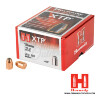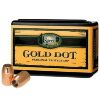Trey Veston
Member
I've only been reloading for a few years and did a lot of reloading of pistol ammo for matches and woods loads. I figured out that I could get more accurate loads by figuring out what powder and what bullet a pistol liked.
I was taught to load to the recommended OAL in the book, and then verify all was good by doing a plunk test. No mention of adjusting the OAL other than making sure it will chamber.
But, seems to me that I could squeeze out a bit more accuracy by paying more attention to the OAL.
So, where do I want my OAL to be to maximize accuracy?
I was taught to load to the recommended OAL in the book, and then verify all was good by doing a plunk test. No mention of adjusting the OAL other than making sure it will chamber.
But, seems to me that I could squeeze out a bit more accuracy by paying more attention to the OAL.
So, where do I want my OAL to be to maximize accuracy?





